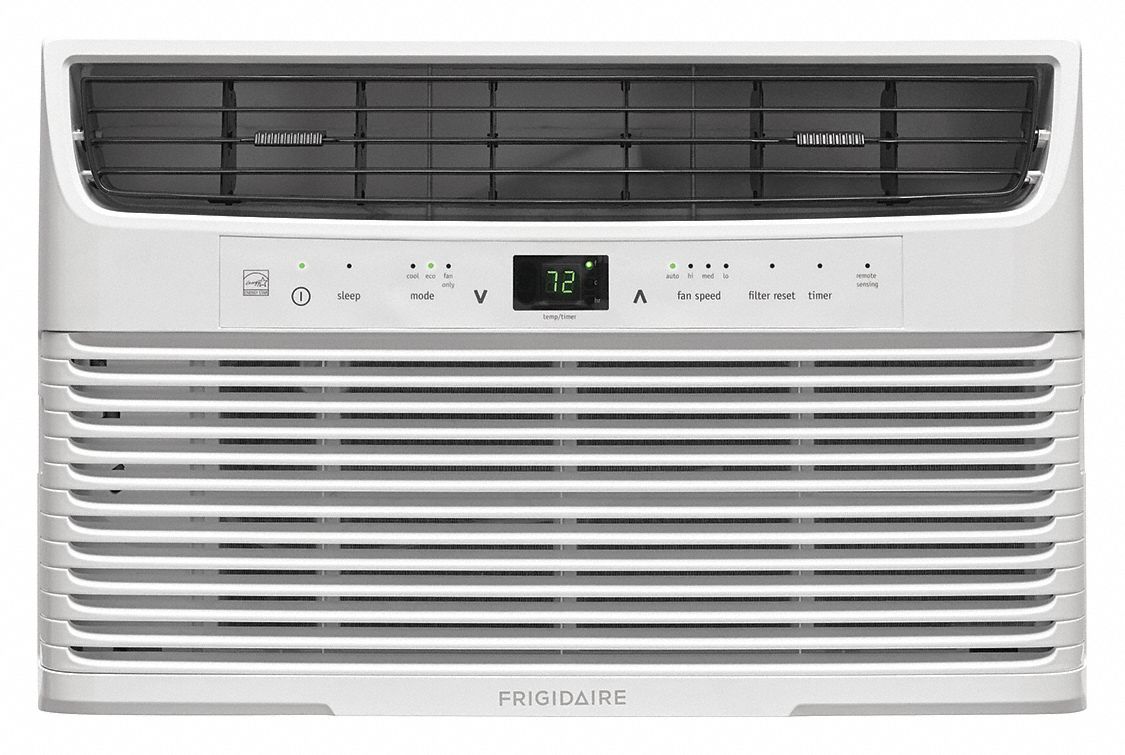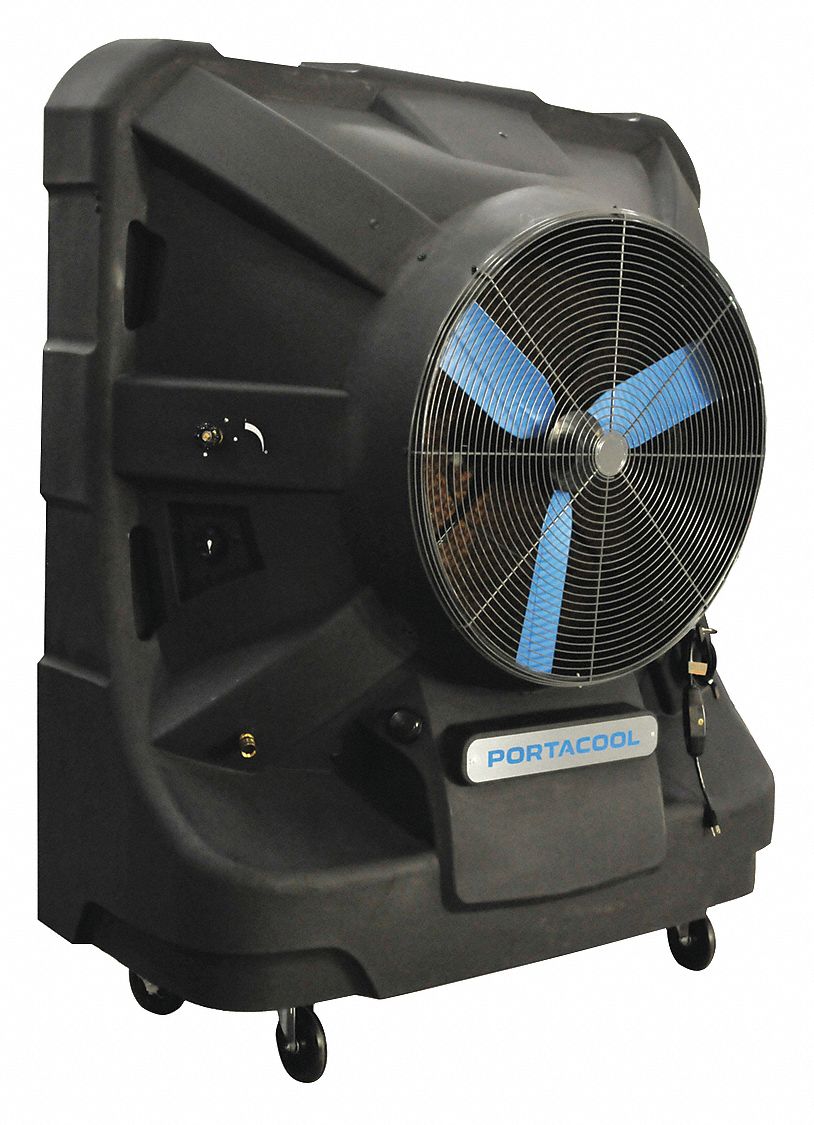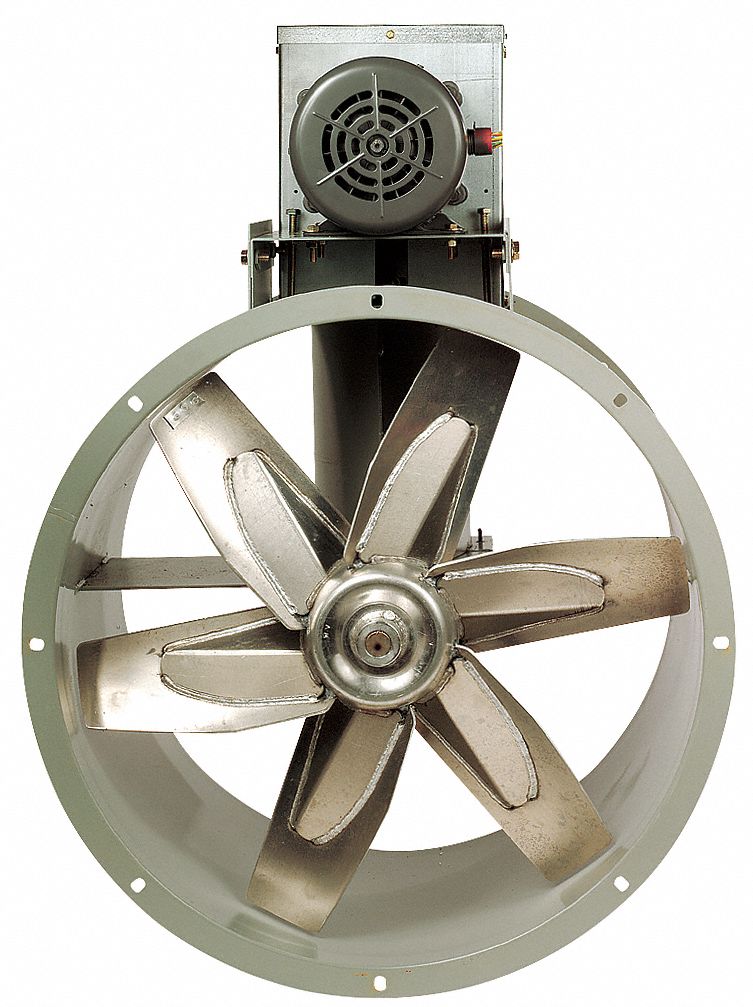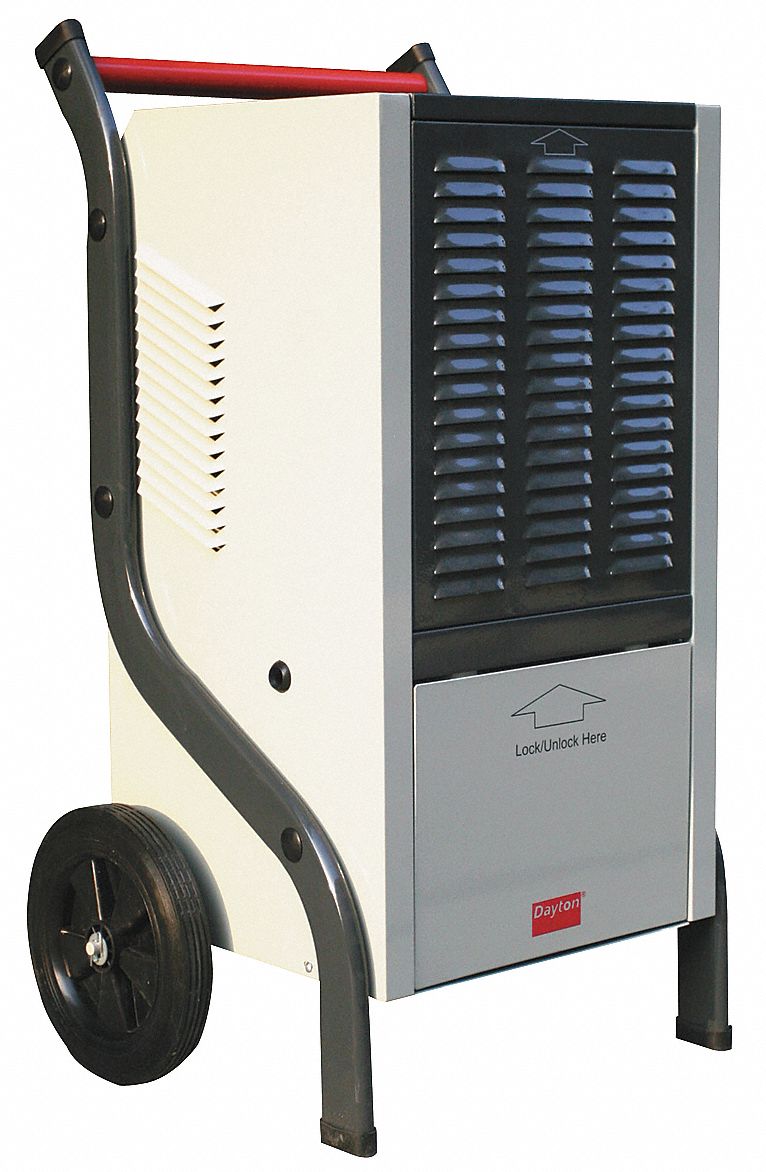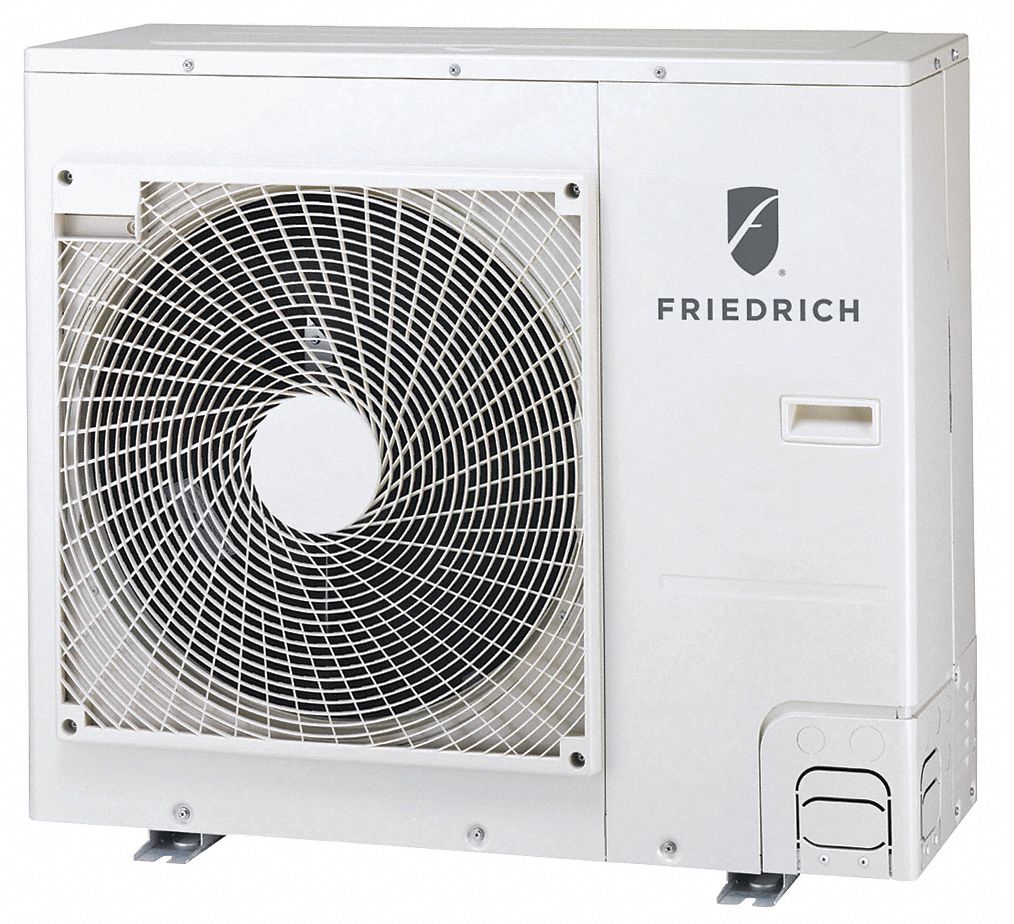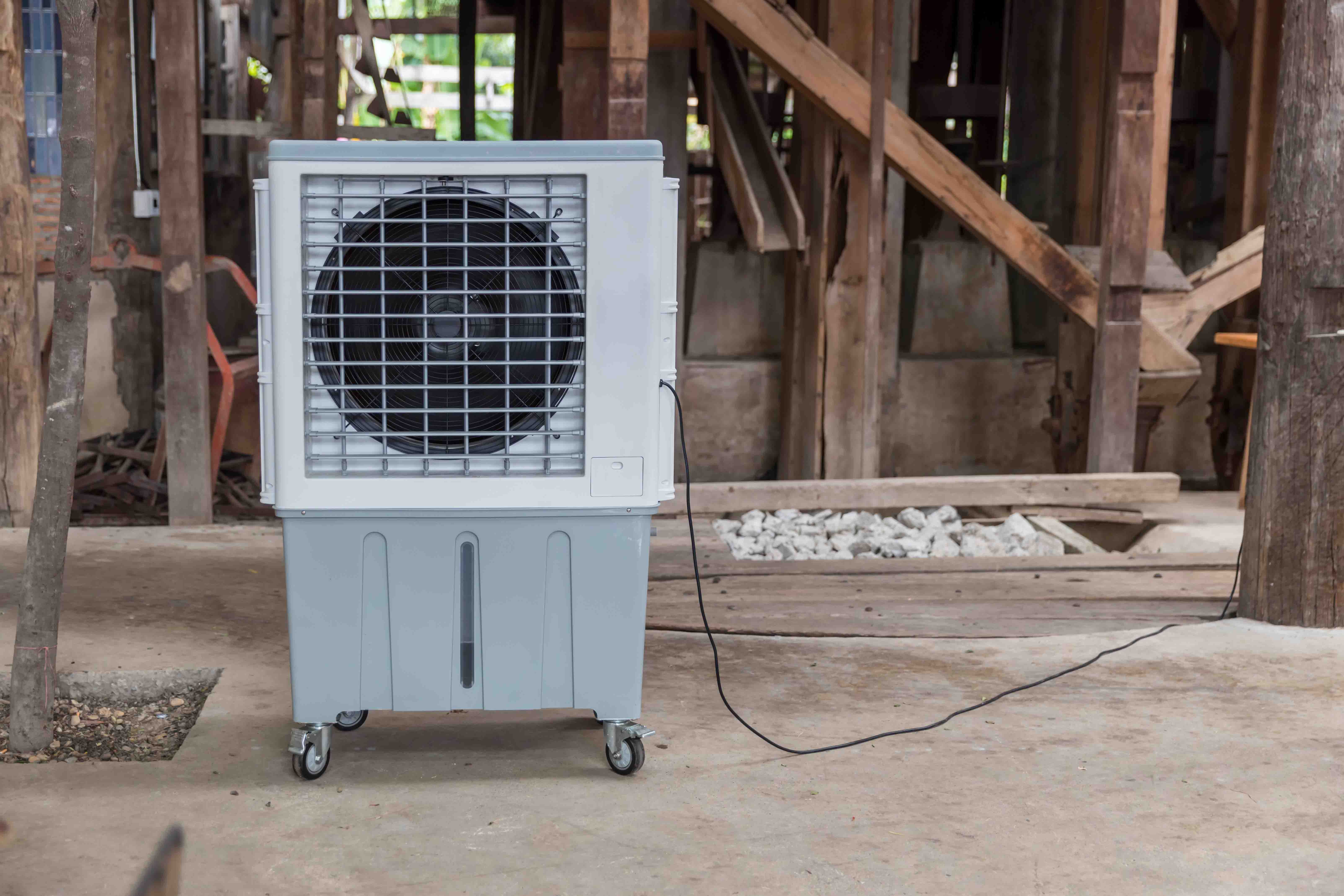

Evaporative Cooler & Swamp Cooler Guide
By Grainger Editorial Staff 5/3/21


Evaporative cooling is an energy-efficient method of cooling the air in a building or space without using a traditional refrigerant-based air conditioning system. Evaporative coolers (also called swamp coolers) work by passing air over or through water-soaked pads of evaporative cooling media. As water evaporates from the pads, the air is cooled. The cool air is then blown into the space, while warmer air escapes through open windows or vents.
Advantages and Disadvantages of Evaporative Cooling
Evaporative coolers and swamp coolers are typically less expensive to buy and run than traditional air conditioners that use refrigeration. According to Energy Saver, a publication of the U.S. Department of Energy's Office of Energy Efficiency & Renewable Energy, installation costs can be about one-half as much as central air conditioners, while energy use can be about one-quarter as much.
Alongside these clear cost advantages, evaporative coolers have a significant limitation. They need to be able to add moisture to the air in order to cool it, so they work better in areas where the outdoor air is drier during the warm season. For this reason, some manufacturers recommend evaporative cooling as an effective strategy only in low-humidity areas of the western U.S. Another disadvantage of evaporative coolers is that they require more frequent maintenance than traditional air conditioners. That said, evaporative cooler maintenance is comparatively simple.
Evaporative Cooling and Ventilation
Evaporative coolers work by continually bringing in air, which is cooled using evaporation and circulated with a fan, while warmer indoor air is allowed to escape through open windows or other ventilation. This is a contrast to the way air conditioning systems work, treating and circulating air that's already inside a building and operating most efficiently when the building is sealed.
For this reason, when a building has few or no windows, doors or vents that can remain at least partially open to the outdoors, an evaporative cooler won't be able to cool it effectively. This also means that an evaporative cooler or swamp cooler can't provide the same level of air-cleaning filtration that can be obtained with high MERV filters in the air handler of a central air conditioning system. However, many evaporative coolers have swamp cooler filters to help remove particles from the outdoor air that's coming in, even if these filters are less effective than high MERV filters.
Connecting to a Water Source
Evaporative coolers have a water tank or reservoir that directs water onto the pads, keeping them saturated while the cooler is operating. On portable swamp coolers, this tank can be filled manually with a bucket or hose, but many units can also be connected to a continuous water supply for automatic filling, and non-portable units typically require a connection for continuous supply.
Sizing an Evaporative Cooler
Evaporative coolers and swamp coolers are rated in cubic feet per minute (cfm), which measures the amount of air they deliver. According to Energy Saver, manufacturers typically recommend 20 to 40 air changes per hour, depending on climate.
Here are two rules of thumb that can help you size an evaporative cooler:
- If you multiply the square footage of a space by the ceiling height and then divide by two, that will give you the cfm rating necessary for 30 air changes per hour.
- If you provide 500 cfm of cooling capacity per square foot of area to be cooled, that will result in 30 air changes per hour in a space with 10-foot ceilings.
Many manufacturers also provide model-specific guidance on how much space units can be expected to cool.
Evaporative Cooler Types: Portable Coolers, Window Coolers, Whole-Building Systems
There are a few basic designs for evaporative coolers.
Portable evaporative coolers or portable swamp coolers are commonly used in warehouses and manufacturing facilities, as well as in outdoor areas where spot cooling is desired.
Window evaporative coolers are commonly used in homes and workshops and can be easily stored during the winter months.
Central evaporative coolers are permanently installed, connecting to ductwork to distribute air throughout a building:
- Down-discharge central evaporative coolers are installed on building roofs.
- Side-discharge central evaporative coolers can be installed on building sides for easier maintenance access, and they can also be installed on building roofs.
Central evaporative coolers use one of two basic designs:
- Multiple-inlet evaporative coolers have louvered inlets on three or four sides. Air enters through these inlets and passes through comparatively thin, fibrous pads for cooling.
- Single-inlet evaporative coolers draw air through a single opening. The then passes through a thicker, honeycombed pad. Single-inlet units typically use a larger blower motor, resulting in greater airflow and, in combination with the thicker pads, more cooling power.
Frequently Asked Questions
Q: How effective are evaporative coolers?
A: The effectiveness of evaporative cooling depends on the temperature and humidity of the environment. It can be very effective in hot, dry areas. In areas that have some humidity in the air, it can still be effective depending on your cooling goals. For example, in some climates, an evaporative cooler can meaningfully increase the comfort of workers in manufacturing facilities and other hot environments without being able to provide the level of cooling that many people would want for their homes.
Q: Do evaporative coolers use a lot of electricity?
A: Evaporative coolers are extremely energy efficient compared to traditional air conditioners that use refrigerant and a compressor. According to Energy Saver, evaporative coolers use about 75% less energy than traditional air conditioners.
Q: Do I need to open my windows to use an evaporative cooler?
A: Yes. Unlike traditional air conditioners, evaporative coolers work best when you're able to open windows or doors in the areas you want to cool, allowing warmer indoor air to escape.
Q: How far should I open the windows for an evaporative cooler?
A: Here are three different approaches to adjusting exhaust capacity within a building or space by adjusting windows, doors or vents:
Q: What kind of fan should I use with portable evaporative coolers in a warehouse or industrial facility?
A: One manufacturer-recommended technique is to place exhaust fans at the opposite end of the space as the evaporative coolers, drawing the cool air away from them and discharging warm air from the space. Avoid using ceiling fans, and avoid blowing other fans against the direction of the evaporative coolers.
Q: What kind of water should I use with an evaporative cooler? Do I need to use a water softener?
A: Manufacturers recommend using clean water in evaporative coolers to help prevent dirt from building up in filters, cooling pads, pipes and pumps, lowering the coolers' effectiveness and necessitating more frequent maintenance. Some manufacturers also suggest using a water softener in areas with hard water, because the dissolved solids from hard water can accumulate on the pads, reducing the speed of evaporation and making the unit less effective.
Q: How much humidity does an evaporative cooler add to the air?
A: It's not easy to estimate the amount of humidity that an evaporative cooler adds to the air in a space, because it depends on so many factors, including the temperature and humidity of the environment and the rate of exhaust ventilation. Evaporative coolers add humidity to air as they cool it, but some of this moisture escapes as air is ventilated from the space. One manufacturer estimates that using evaporative cooling in an appropriately ventilated space will increase the humidity about 2% to 5%.
Q: How often should evaporative cooler pads be changed?
A: The frequency with which you'll want to change your evaporative cooler pads depends on the kind of pad the unit uses. Manufacturers generally recommend changing aspen pads once or twice during a cooling season, depending on how long the cooling season is. Honeycomb pads made from cellulose (paper) or other rigid material are designed to last longer, and when regularly cleaned and properly handled are designed to last two to five years, depending on the manufacturer.
The information contained in this article is intended for general information purposes only and is based on information available as of the initial date of publication. No representation is made that the information or references are complete or remain current. This article is not a substitute for review of current applicable government regulations, industry standards, or other standards specific to your business and/or activities and should not be construed as legal advice or opinion. Readers with specific questions should refer to the applicable standards or consult with an attorney.

